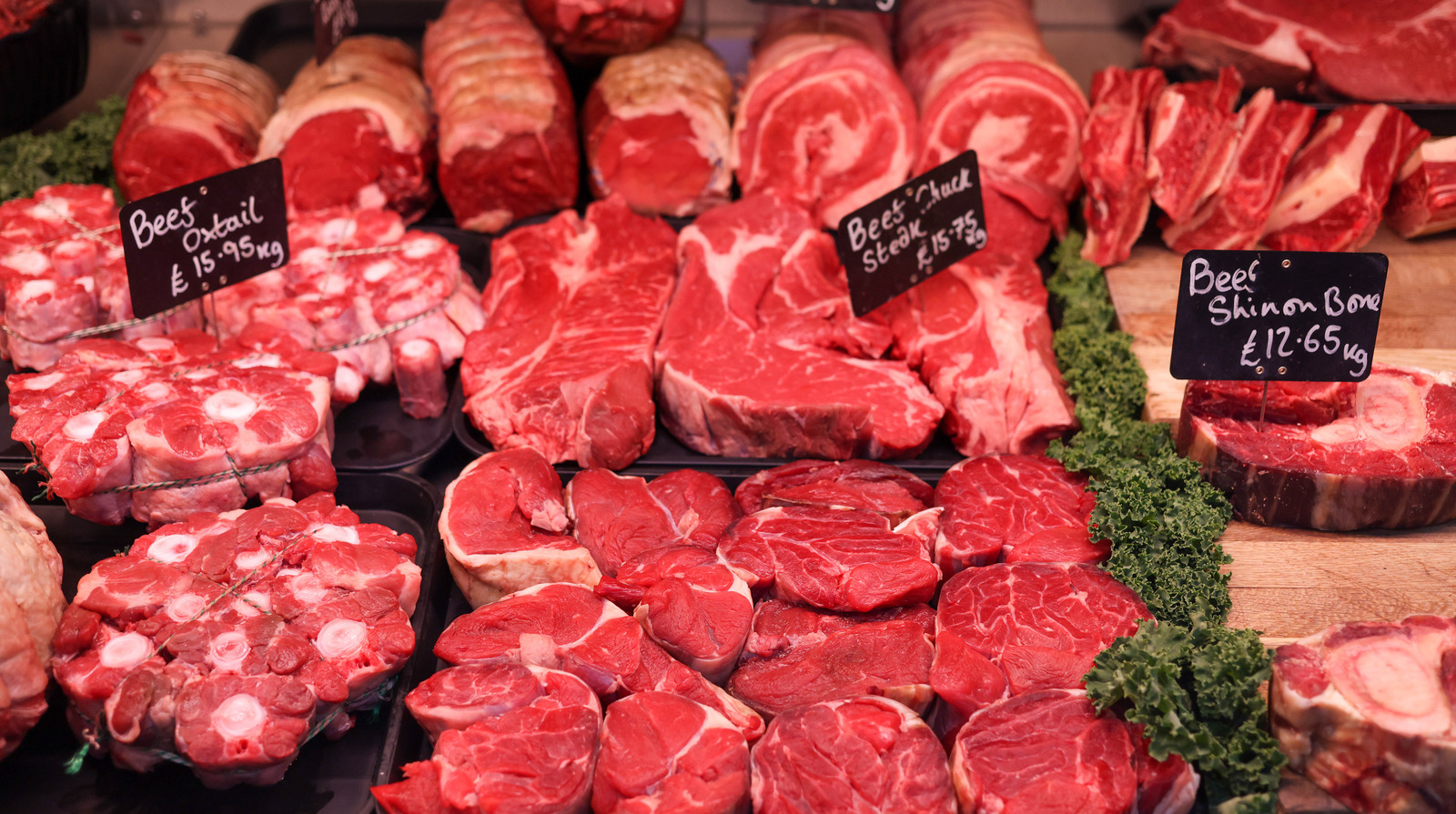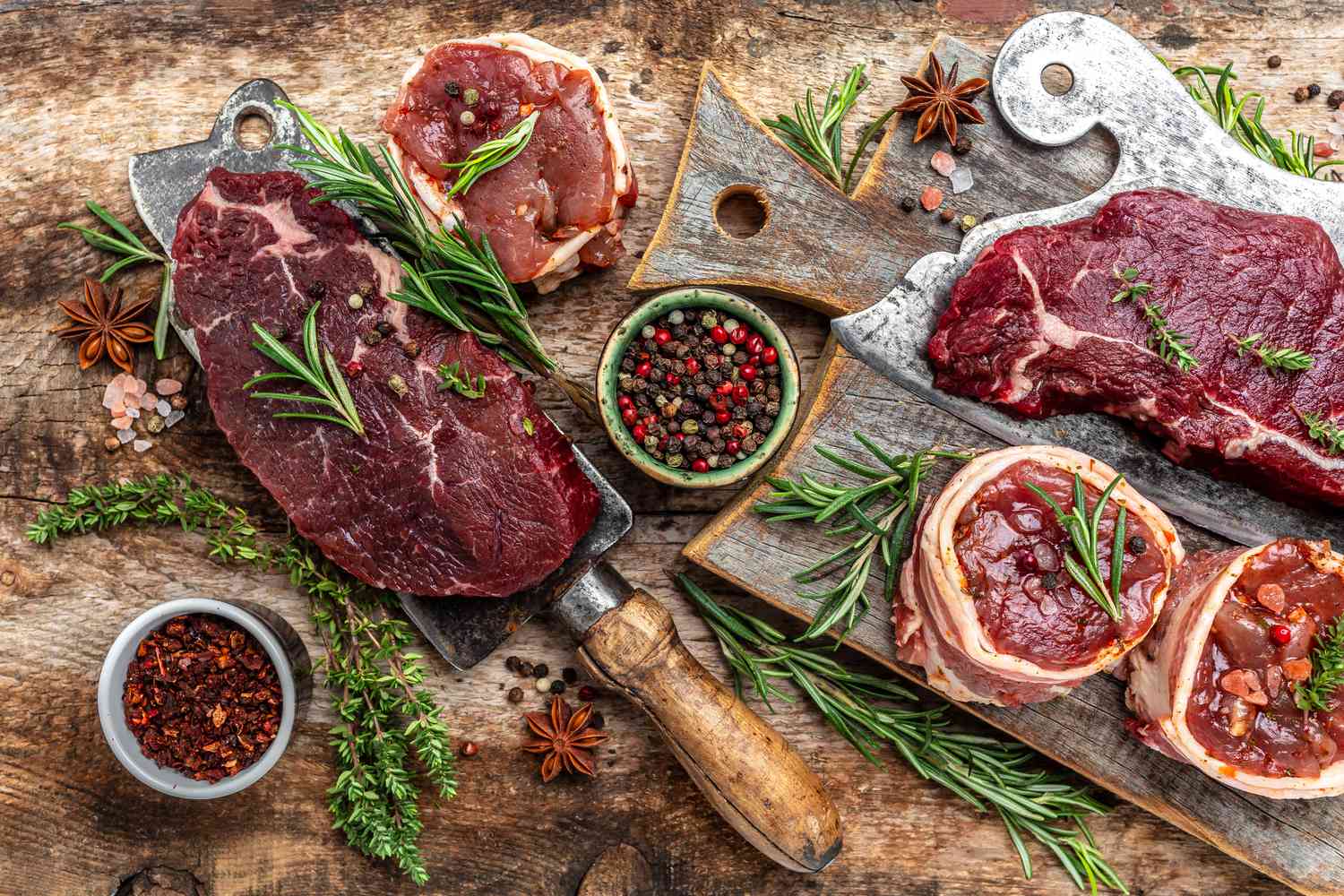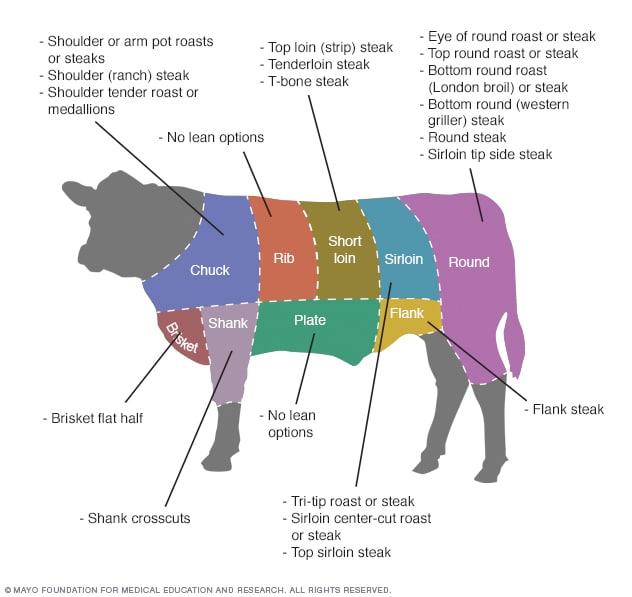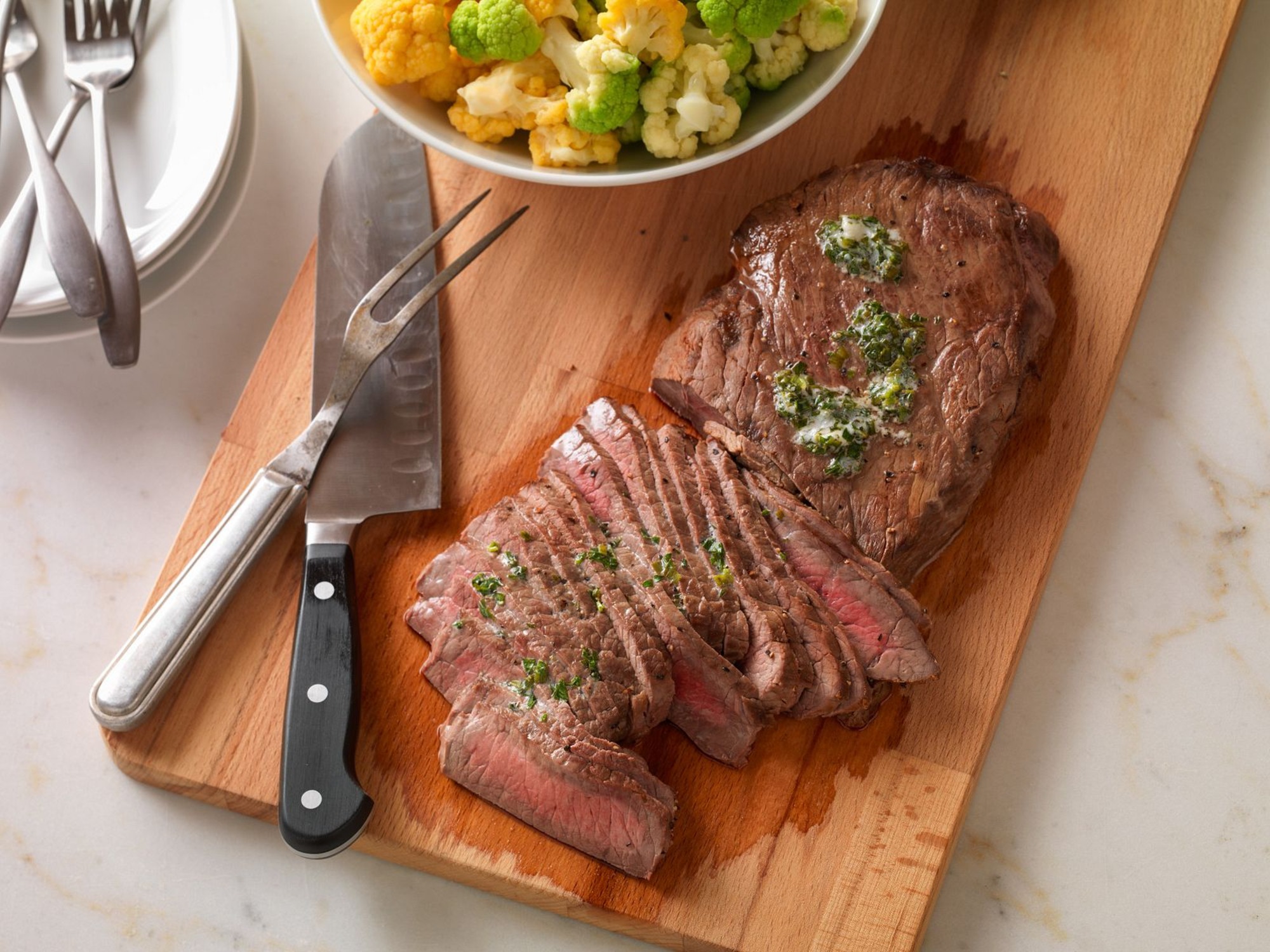
Understanding Lean Cuts of Steak
What Are Lean Cuts?
Lean cuts of steak are basically pieces of meat that have less fat. They’re a healthier choice for those who love their meat but want to keep things light. The USDA defines a cut as “lean” if it has under 10 grams of fat, no more than 4.5 grams of saturated fat, and less than 95 milligrams of cholesterol per 100 grams.
Some of the most popular lean cuts are:
- Sirloin Steak
- Top Round Steak
- Eye of Round Roast and Steak
- Tenderloin/Filet Mignon
- Bottom Round Roast/Steak
These cuts are not just good for you, they taste great too.
Why Go for Lean Cuts?
Choosing lean cuts of steak comes with a bunch of benefits, especially for health-conscious eaters. In a world where food choices can really affect your wellness, picking lean beef is one of the easiest ways to up your nutrition game. Here are some great reasons why you should consider them:
- Lower Fat Content: Lean cuts have way less fat compared to fattier cuts like ribeye or T-bone steaks. This means fewer calories and can help with weight management.
- High Protein Source: These cuts are packed with protein, which is essential for muscle growth and repair. If you’re into working out, these steaks are your best friend.
- Nutrient-Rich: Lean steaks bring along important vitamins and minerals. They’re great sources of iron, zinc, and Vitamin B12, all of which help keep your energy up and your body healthy.
- Flavor Without Guilt: Just because they’re lean doesn’t mean they lack flavor. With the right marinades and cooking methods, they can taste just as rich as fattier cuts. Trust me, marinated flank steak can be full of flavor while being waistline-friendly.
In short, adding lean cuts to your meals brings health perks and keeps your meals exciting, whether you’re grilling, pan-searing, or oven-roasting.

Factors to Think About When Choosing Lean Cuts
Marbling and Fat Content
When picking out lean cuts of steak, it’s important to get familiar with marbling and fat content. Marbling is just the little streaks of fat found within the muscle of the meat. It plays a big role in the flavor, tenderness, and juiciness. While lean cuts are less fatty, a little marbling can actually boost the taste without hurting your health.
Here are some things to keep in mind:
- Balance is Key: Look for cuts with a bit of intramuscular fat for extra flavor. A cut like eye of round can be lean, but a little marbling can keep it tender and tasty.
- Different Cuts, Different Profiles: Cuts like sirloin or tenderloin usually have less marbling than fattier cuts like ribeye. If you want richer flavor but still want to stay lean, top sirloin is often a good middle ground.
From personal experience, seasoning and cooking techniques can really help with less marbled cuts. A well-cooked flank steak can be super delicious when it’s marinated and grilled right, even though it has less fat.
Nutritional Value
The nutritional aspect of lean cuts is also something to consider. These cuts are generally loaded with protein but keep fat and calories low, making them a smart choice for a balanced diet.
Here are some key nutritional highlights:
- Protein Powerhouse: Lean cuts are full of protein, with top sirloin providing about 22 grams per serving. They’re perfect for those focusing on muscle maintenance and overall nutrition.
- Essential Vitamins and Minerals: Lean cuts don’t just give you protein; they also come packed with vital nutrients. Beef is a good source of iron for blood oxygen transport and zinc for immune support.
- Lower Caloric Options: Since they have less fat, these cuts are lower in calories compared to fattier ones. So, they’re a great choice if you’re watching your calorie intake but still want to enjoy the taste of beef.
Basically, when choosing lean cuts of steak, aim for a good balance of marbling, fat content, and nutrition. Going for cuts that are rich in protein but low in fat not only helps your health but makes for a tasty meal.

Top Picks for the Leanest Cuts of Steak
Filet Mignon
When you think of tender cuts, filet mignon often comes to mind. This luxe cut from the tenderloin is super low in fat and melts in your mouth, making it perfect for special occasions. For a 3-ounce serving, you’re looking at around 276 calories and only 10 grams of fat, which isn’t bad at all for a steak.
- Cooking Tips: Because it’s so tender, filet mignon doesn’t need heavy marinades. Just a little salt and pepper with a quick sear on high heat brings out its natural flavor.
- Personal Experience: One time, I made filet mignon for a dinner party with a red wine reduction sauce. Everyone was impressed by how juicy and flavorful it was without being greasy.
Sirloin
Next, we’ve got sirloin, which is popular for its balance of flavor and fat. Each serving has about 10 grams of fat and packs around 50 grams of protein, making it a nutritious choice. It’s versatile and can be grilled, broiled, or slow-cooked.
- Benefits: Sirloin is lean but it’s also easier on the wallet, so you can enjoy a tasty steak without breaking the bank.
- Serving Suggestions: Slice a grilled top sirloin for fajitas paired with grilled peppers and onions for a healthy and delicious meal.
Round Steak
Last up is round steak, a great lean option for those looking to enjoy beef while watching their fat intake. Cuts from the top or bottom round usually have about 5 grams of fat per serving, making them perfect for a healthy diet.
- Flavor and Texture: Round steak has a stronger flavor but can be a bit chewier due to lower fat. Marinating before cooking helps with tenderness.
- Culinary Tip: Slow-cooking or braising round steak is the way to go for the best results. I once made round steak tacos in a slow cooker, and my family couldn’t get enough of them.
To wrap it up, these lean cuts not only offer great nutrition but also versatility in cooking and delicious meal options. Each cut has its distinctive qualities, making them perfect for a variety of dishes while keeping health a priority.

Cooking Methods for Lean Cuts
Grilling
Grilling is probably the most loved method for cooking lean cuts of beef, and it’s no surprise. This technique not only adds a smoky flavor but also lets the fat drip off, keeping the meat lean and low-calorie. Cuts like sirloin and filet mignon do really well on the grill, forming a nice crust while staying juicy inside.
- Tips for Grilling:
- Preheat the Grill: Get your grill hot before adding the meat. This helps to get that perfect sear and locks in the juices.
- Keep it Simple: Just a sprinkle of salt and pepper can let the meat’s natural flavors come through.
- Timed Cooking: Lean cuts can dry out quickly, so aim for medium-rare. For a 1-inch thick sirloin steak, grill for about 4 to 5 minutes per side.
A personal favorite is grilled top sirloin with a side of grilled veggies. It’s not just colorful but also nutritious and filling.
Broiling
Broiling is another awesome way to cook lean cuts. It involves cooking meat under high heat, kinda like grilling but inside the oven. This method is fantastic for cuts like eye of round or chuck eye steak, giving you a perfect sear without needing to go outdoors.
- Benefits of Broiling:
- Convenient: You can get that grill-like result right from your kitchen!
- Even Cooking: The heat from above helps the meat cook evenly, keeping it tender and tasty.
- Broiling Tips:
- Position the Oven Rack: Make sure the meat is about 4 to 6 inches from the heat source.
- Watch Closely: Lean cuts cook fast, so keep an eye on them to prevent overcooking. Turning the meat halfway through helps it cook evenly.
I’ve had great luck broiling burgers made from ground round steak, and they turn out juicy without all that extra fat.
Pan-Searing
Pan-searing is a fantastic technique to use with lean cuts. This method creates a nice crust, bringing out the flavor and sealing in moisture. It’s perfect for cuts like tenderloin and top round, letting you whip up a gourmet meal at home.
- Pan-Searing Steps:
- Preheat a Cast Iron Skillet: Using a heavy skillet helps you get that amazing sear. Add a bit of olive oil or another healthy fat.
- Sear First: Place your seasoned meat in the skillet without crowding it. Let it cook undisturbed for a few minutes until a crust forms before flipping.
- Finish in the Oven: For thicker cuts, finishing in the oven helps the inside cook evenly without burning the outside.
One recipe I love is pan-seared filet mignon with mushroom sauce—simple and decadent!
To sum up, no matter if you’re grilling, broiling, or pan-searing, the right cooking methods can make a huge difference with lean cuts. Try these methods to see what you enjoy best, and create tasty, health-conscious meals that hit the spot.

Pairing Lean Cuts with Healthy Sides
Grilled Vegetables
When you’re enjoying lean cuts of steak, grilled veggies are a fantastic side that matches perfectly with the meaty flavors. Grilling brings out the natural sweetness and smokiness of the veggies while keeping them crisp and colorful. Bell peppers, zucchini, and asparagus are all great choices that add essential vitamins and fiber.
- Cooking Tips:
- Marinate: A quick marinade of olive oil, garlic, and herbs can really boost the flavor. Letting the veggies soak for about 30 minutes before grilling does wonders.
- Use a Grill Basket: This helps stop smaller pieces from falling through the grate, ensuring everything gets that perfect char.
I once grilled a colorful mix of veggies to go with a beautifully cooked top sirloin. It was a feast for the eyes and made for a hearty meal without too many calories.
Quinoa Salad
Quinoa salad is another awesome side to serve with lean cuts of beef. It’s full of protein, fiber, and essential amino acids, making it a nutrient-rich grain to support a healthy diet. You can customize it with different ingredients, too!
- Ingredients to Consider:
- Vegetables: Cherry tomatoes, cucumbers, and spinach fit perfectly in a quinoa salad.
- Dressings: A light vinaigrette with lemon juice and olive oil adds a refreshing kick.
- Personal Tip: I love adding feta cheese and a sprinkle of fresh herbs like parsley or basil. It kicks up the flavor while keeping things light and satisfying.
One time, I whipped up a quinoa salad with grilled chicken to go with a medium-rare filet mignon. The nutty flavor of the quinoa went so well with the tender beef, making for a delightful dinner.
Sweet Potato Mash
Lastly, sweet potato mash is a wonderful side that adds a hint of natural sweetness to your plate. Loaded with vitamins A and C, they’re also a solid source of complex carbs, providing energy to balance the protein from your steak.
- Preparation Ideas:
- Simple Mash: Boil sweet potatoes until soft and mash with a bit of butter, salt, and pepper. You can mix in a pinch of cinnamon or nutmeg for extra warmth.
- Creamy Version: If you like a creamier texture, a splash of milk or Greek yogurt makes it richer.
Once, I made sweet potato mash to go along with a bottom round steak. The mix of savory meat and sweet, creamy mash was totally delicious.
To wrap it all up, pairing lean cuts of beef with healthy sides like grilled veggies, quinoa salad, or sweet potato mash not only boosts the meal’s flavors but keeps it balanced too. Each dish has its own unique profile that makes dinner wholesome and satisfying. Try out these combos to discover delightful ways to enjoy lean cuts without skimping on taste or nutrition.

Leave a Reply